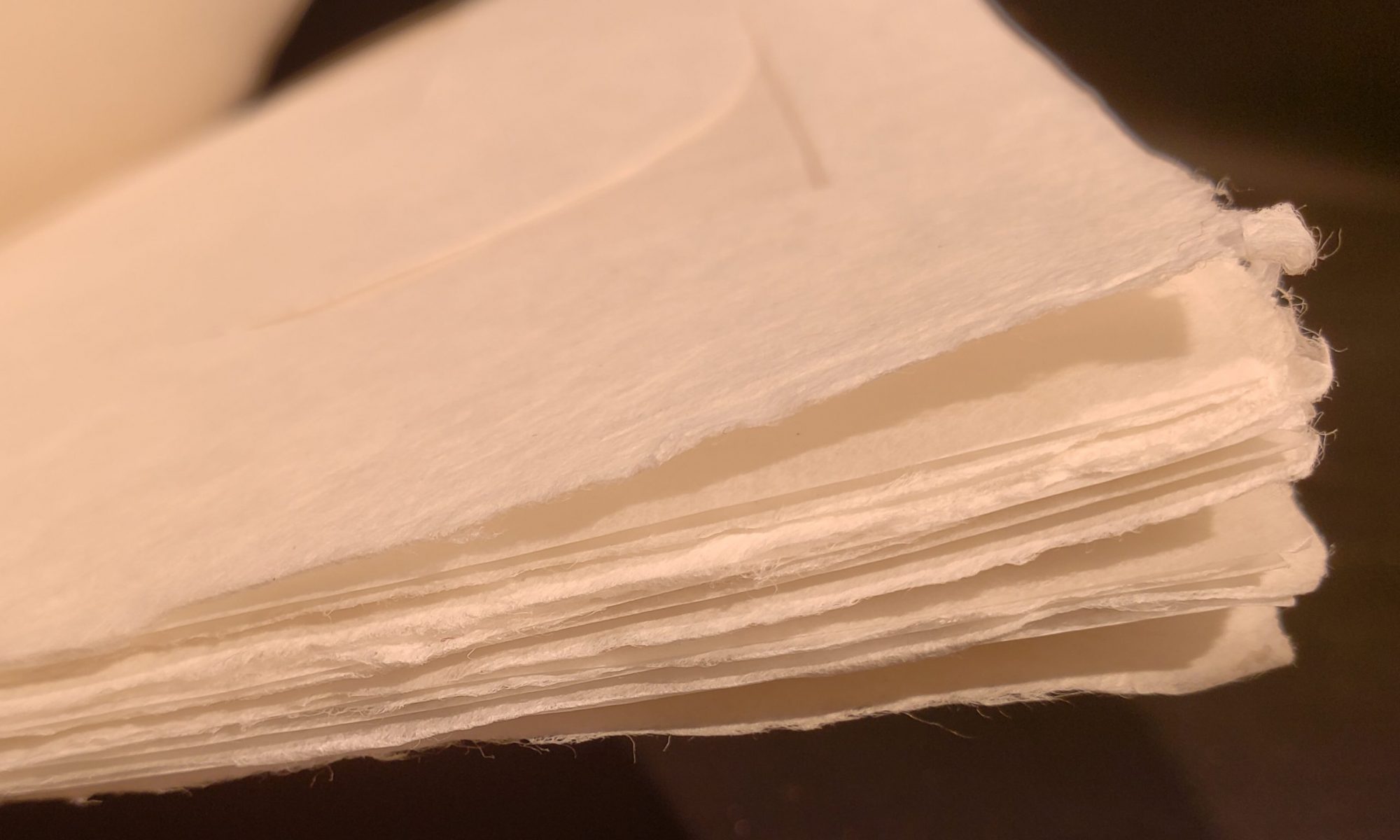[slideshow_deploy id=’744′]
An adaptation on a 2021 artwork, Record of Chance, Evolution of Change and Patterns, draws from the same process. Made of a pocket-styled cover, this book opens to a series of square cards made from handmade cotton paper. On each card are lines and dots. All the cards are unique.
The individualistic nature of the cards comes from the process of creating marks on the paper with a list of rules and a six-sided die. An evenly spaced dot grid is first drawn on each piece, then, from left to right, each dot is determined to either have a connecting line or point.
- 1 or 2 means a horizontal line
- 3 or 4 means a vertical line
- 5 or 6 means a dot
If a dot cannot have a particular mark, say it is a point at the right most edge of the page, then the results are viewed as invalid, and the die rolled until a result can be used. So, that right most point could have a vertical line or dot, but not a horizontal line.
Evolution of Change and Patterns is not about an idea. Strange as it is to say, since its inspiration did have meaning. Rather, this work was about experimentation and the evolution of an idea. It maintains the general format of a codex book with the cover’s construction but then challenges the narrative of static signatures with loose, unbound pages. Readers are able, perhaps encouraged, to sort through the cards, mixing them and changing them for the next viewer.
And the content represents the expansion of process. Instead of static pages for display, these are now interactable. Instead of just lines, the dot is introduced as an element. It explores ink permeability, with the dots showing distinctly through the paper but not the lines.
Change is happening. Do we, as humans, acknowledge it?
